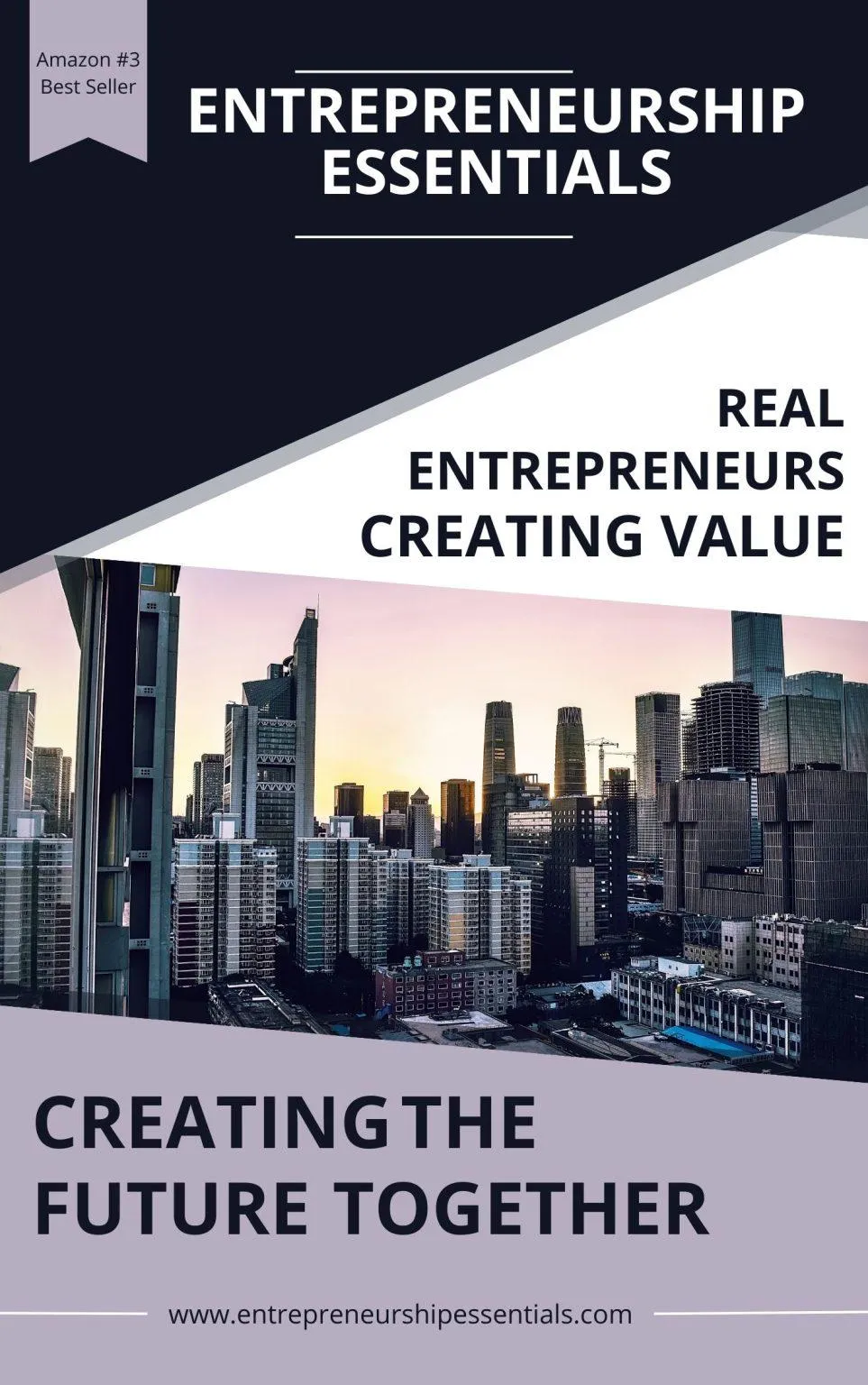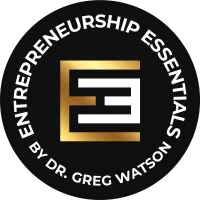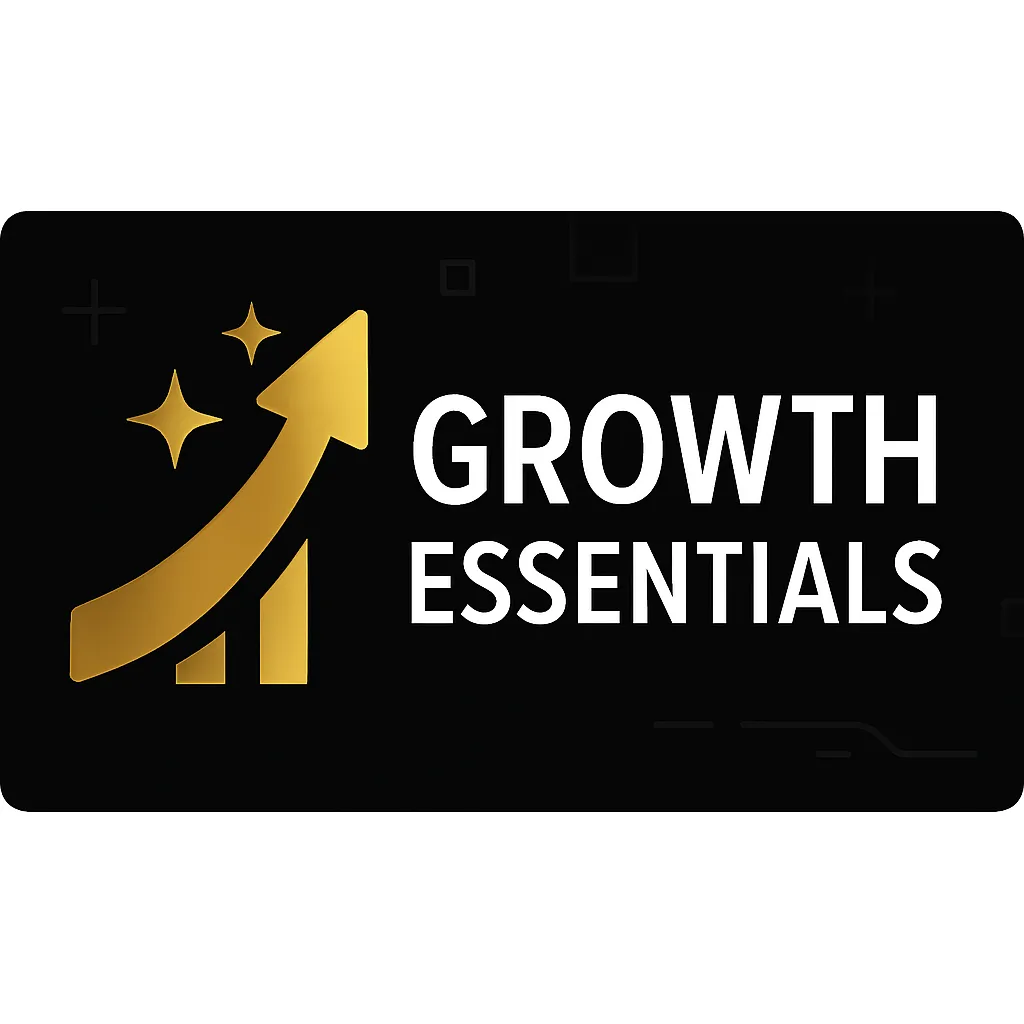How to Fund Your Startup: Proven Funding Options for Business Owners
Funding your startup can feel overwhelming — but it doesn’t have to be. This guide reveals 12 proven strategies to help you raise the capital you need to launch, grow, and thrive. Discover smart funding paths that fit your vision and fuel your success.
Why Startup Funding Feels So Hard—And Why New Business Owners Aren’t Alone
She walked into my office just after 4:00 PM, clutching a half-worn spiral notebook filled with sketches, assumptions, and ideas scribbled in the margins. She looked determined, but you could also see the weight she was carrying. With $37 in her checking account and a prototype that still lived mostly in her imagination, she asked me one question that thousands of aspiring founders silently carry with them:
“How do I fund my startup if I don’t come from money?”
There was no investor waiting in the wings. No safety net. Just ambition, urgency, and a need for clarity.
If you’ve ever asked that same question—know this: You are not alone. And more importantly, you are not disqualified.
The world of entrepreneurship has changed. While headlines tend to spotlight million-dollar venture capital deals and Shark Tank fairytales, the real stories—the ones that most new business owners live—are quieter, grittier, and far more empowering.
They’re stories of founders who:
Built their first product while holding a full-time job
Took small loans from friends or family to build a prototype
Sold pre-orders or service contracts to fund early manufacturing
Pieced together funding from grants to small businesses, competitions, and crowdfunding
These are not backup plans. These are smart, strategic choices made by people who understand the real truth of startup success:
Funding is not about who you know. It’s about how well you understand your business, your timing, and your capital strategy.
In this comprehensive guide, you’ll learn how to:
Understand the type of funding available to new ventures
Choose the right capital strategy based on your business model
Build traction before you ever pitch an investor
Master the psychology and expectations of funding partners
Avoid rookie funding mistakes that can sabotage your future
It’s time to fund your startup—not out of desperation, but out of vision. Let’s get started.
Understanding the Types of Funding: 12 Smart Strategies to Fund a Small Business
The most common emotion tied to startup funding isn’t excitement—it’s anxiety. And that anxiety often comes from two dangerous myths:

Myth 1: “If I don’t raise money early, I’m not a real entrepreneur.”
The startup ecosystem glorifies speed. “Move fast and break things” has become gospel. But the reality is that most startups are not designed for hyper-growth—nor should they be. They are built methodically, one decision at a time, by founders who understand that premature fundraising can be just as fatal as running out of money.
You don’t need funding to validate your business. You need validation to earn funding. That difference alone changes everything.
Myth 2: “Only people with connections get funded.”
What makes funding feel impossible is not a lack of money—it’s a lack of a plan. Most founders haven’t been taught to think strategically about capital. They chase funding for survival, not growth. They don’t know their burn rate, their revenue targets, or their milestone timelines. And they often don’t realize they have options beyond VC or personal debt.
Let’s reset the mindset:
Capital is not a goal. It’s a tool.
Raising money doesn’t make you successful. Using money wisely does.
Funding should serve your mission. Not the other way around.Here's some stuff
When you fundraise from a place of alignment—not desperation—you gain clarity, control, and confidence. You don’t need to raise like everyone else. You need to raise like the founder your business deserves.
The Startup Funding Spectrum: 12 Proven Methods
Every business model demands a different funding mix. Your capital stack should match your growth curve, customer journey, and execution style—not someone else’s playbook.
Your funding path depends on your type of business, business goals, and long-term control of your company. Each option should be evaluated based on your stage, runway, and risk tolerance.
Here’s a breakdown of the 12 most effective funding methods you can use—many in combination—as you grow your startup.
1. Bootstrapping
What it is: Funding your business with personal savings or operating cash flow
Best for: Low-cost service models, early-stage testing, solo founders
Why it works:
Teaches fiscal discipline
Preserves 100% ownership
Builds confidence in revenue-based growth
Example: Mailchimp bootstrapped for 17 years before selling for $12 billion.
ECaution: Don’t mistake bootstrapping for “do everything yourself.” Leverage your time wisely. Know when to invest to avoid burnout.
2. Friends and Family
What it is: Informal capital from your immediate network
Best for: Prototypes, MVPs, early operating expenses
Why it works:
Easiest early money to access
Based on personal trust rather than traction
Structure it wisely:
Treat it like professional capital
Use promissory notes, clear terms, and timelines
Set realistic expectations: “This could go to zero.”
3. Crowdfunding (Rewards and Equity)
What it is: Raising capital from supporters or early adopters
Best for: B2C products, community-driven startups
Two major types:
Rewards-based (Kickstarter, Indiegogo): Pre-sell a product or offer perks
Equity-based (Wefunder, StartEngine): Offer small ownership stakes
Why it works:
Doubles as funding and marketing
Validates demand before manufacturing
Builds an early customer base
Pro tip: Success depends on your storytelling, video quality, and pre-launch list. Treat it like a product launch—not just a fundraiser.
4. Grants and Competitions
The Small Business Administration (SBA) and other institutions often offer grants to small businesses through initiatives like the Small Business Innovation Research (SBIR) program.
What it is: Non-dilutive capital awarded based on innovation or social impact
Best for: Deep tech, social enterprise, clean energy, education
Sources:
Federal: SBIR, NIH, NSF
Local: City or state innovation programs
Private: University pitch contests, nonprofit accelerators
Why it works:
No equity loss
Provides credibility
Great for R&D-heavy businesses
Pro tip: Learn the language of grant reviewers. Follow instructions to the letter. And don’t wait until you “need” it—apply early.
5. Angel Investors
What it is: High-net-worth individuals who invest personal capital in startups
Best for: Early traction, MVP, or pre-seed
Why it works:
More flexible than VCs
Often bring mentorship and networks
Faster decisions
Key to winning angels:
Build a strong personal story
Show traction—even if modest
Clarify exit scenarios (even if it’s just theoretical)
6. Venture Capital
What it is: Institutional capital for startups with high growth potential
Best for: SaaS, AI, marketplace, biotech, and platforms targeting large markets
Why it works:
Big checks
Strategic support
Access to follow-on funding
Cons:
Heavy dilution
Board control
Exit pressure (IPO or acquisition)
VC readiness checklist:
Big market (TAM $1B+)
Scalable product
Strong team with prior success
Evidence of product-market fit
Clear growth model (CAC < LTV)
7. Revenue-Based Financing (RBF)
What it is: Funding repaid as a % of monthly revenue
Best for: Predictable, recurring revenue businesses (SaaS, ecommerce)
Why it works:
No equity dilution
Faster than bank loans
Scales with revenue
Platforms: Clearco, Pipe, Capchase, Stripe Capital
Caution: Be mindful of total repayment cap. RBF is not “cheap” capital—it’s flexible capital.
8. SBA Loans and Traditional Business Loans
For small business owners with more than two years in business or a detailed business plan, the SBA and banks may offer working capital through traditional loans.
What it is: Debt-based financing from traditional or government sources
Best for: Asset-backed, brick-and-mortar, or franchised businesses
Why it works:
Low interest rates
Clear repayment timelines
Builds credit history
Pro tip: SBA 7(a) microloans (up to $50K) are ideal for startups. Prepare a full business plan and financial projections.
9. Accelerators and Incubators
What it is: Time-bound programs offering seed capital, training, and network access
Best for: Tech startups and mission-driven ventures
Why it works:
Credibility boost
Strategic mentorship
Investor introductions
Top programs: Y Combinator, Techstars, ERA, Founder Institute
Caution: Be prepared for intense competition and relocation (some are cohort-based).
10. Strategic Partnerships
What it is: Capital or co-investment from a corporate partner aligned with your market
Best for: B2B, health tech, fintech, or logistics
Why it works:
Unlocks distribution channels
Builds enterprise trust
Validates your business model
Tip: Start with a pilot, not a check. Build the relationship first. Co-develop value.
11. SAFEs and Convertible Notes
What it is: Agreements to provide future equity based on a later valuation
Best for: Speedy fundraising without immediate valuation pressure
Why it works:
Quick to execute
Common in early-stage deals
Pro tip: Too many SAFEs can complicate your cap table. Plan your cap table early using tools like Carta or Pulley.
12. Alternative and Impact Capital
What it is: Mission-aligned funds investing in diversity, equity, and inclusion
Best for: Women, BIPOC, LGBTQ+, and social-impact founders
Why it works:
Focus on values and outcomes
Often provide community and coaching
Examples: Backstage Capital, Fearless Fund, Echoing Green
Tip: These aren’t handouts—they’re fuel for underestimated founders.
Stage-Based Startup Financing: How to Match Capital to Your Business Goals
Raise with clarity. Each funding round must match the milestone you’re trying to hit.
One of the most common mistakes founders make is seeking funding at the wrong time—or worse, choosing the wrong type of capital for their stage. The right funding depends not only on how much money you need, but on why you need it and what you’re trying to accomplish with it.
Let’s break it down by business stage:
Idea Stage
Your product might still be on paper, but the energy is real. At this stage, your funding goals are limited: research, early prototyping, maybe a landing page to test demand.
Best options:
Bootstrapping
Friends & Family
Business Plan Competitions
Grants (SBIR, economic development)
Rewards-Based Crowdfunding (pre-orders)
Validation Stage
You’ve built a prototype or MVP. You’re getting early user feedback, maybe a few pre-orders or signups. Now is the time to turn ideas into data.
Best options:
Accelerators
Angel Investors
SAFE/Convertible Notes
Crowdfunding (Rewards or Equity)
Pre-sales and strategic pilot contracts
Early Growth Stage
You have traction—customers, sales, perhaps some recurring revenue. You need to scale.
Best options:
Building loyalty with recurrVenture Capital (seed or pre-Series A)
Revenue-Based Financing
SBA Microloans
Strategic Partnerships
Milestone-Driven Fundraising
Rather than raising for “runway,” raise for milestones:
Product launch
Sales growth
Market entry
Tech development
Break-even point
You don’t just need cash—you need momentum. Funding is the fuel. Milestones are the map.
What Investors Look for in a Funding Round
(and Why Many Startup Businesses Fail)
Investors don’t invest in ideas. They invest in evidence. In execution. In founders who are sharp, focused, coachable, and data-driven.
Investors want more than a pitch—they want proof. Here’s what they evaluate:
So what exactly do investors look for?
1. The Team
Investors will tell you: “We’d rather back an A+ team with a B+ idea than the reverse.”
Do you have a complementary founding team?
Can you handle conflict and adversity?
Have you built anything before?
Solo founders often face more scrutiny—so shore up your advisory board or show collaborative traction with partners and freelancers.
2. Market Opportunity
Your market doesn’t need to be $10B today—but it needs to have credible scale. Use TAM/SAM/SOM frameworks:
TAM – Total Available Market
SAM – Serviceable Addressable Market
SOM – Share of Market you can realistically capture
Don’t guess. Reference third-party data (Gartner, IBISWorld, Statista, government reports).
3. Traction & Metrics
Show, don’t tell. Data speaks.
Sales or pre-orders
Website traffic or signups
Churn and retention
Engagement metrics
Conversion rates
Even if you’re early, give a clear customer validation signal.
4. Defensibility & Differentiation
What makes you hard to copy?
Proprietary tech
Network effects
Branding advantage
Regulatory approvals
Strategic partnerships
If you’re not the only one solving the problem, show why your solution scales better, faster, or cheaper.
Designing a Business Funding Strategy Without Giving Up Control of Your Company
Funding is not about following a template. It’s about building a capital strategy that matches your model, mission, and mindset.
You don’t need to give up a stake in your company to get your business off the ground. Startup founders often overlook traditional financing or non-dilutive options that allow full control of your company.
Step 2: Clarify Your Milestones
Funding should unlock growth, not prolong survival. What does this round fund?
MVP completion?
First 1,000 users?
Hiring a CTO?
Opening your first storefront?
Tie every dollar to a deliverable.
Step 3: Choose Your Mix
You don’t have to choose just one funding source. Combine wisely:
RBF + Grants = fast cash + no dilution
SAFE + Crowdfunding = early capital + brand visibility
VC + Strategic = capital + distribution power
Step 4: Preserve Optionality
Avoid short-term decisions that compromise long-term strategy:
Keep your cap table clean
Avoid hidden dilution
Build for investor-readiness before you pitch
Smart funding strategy = Clarity of purpose + Capital flexibility + Execution confidence.
How to Pitch to Secure Funding: A Guide to Funding Conversations That Win
Make business decisions based on your business plan and clearly show how funding will help fund your goals.
Pitching is both science and storytelling. Your job is to show why this opportunity is urgent, inevitable, and perfectly timed—with you at the helm.
Anatomy of a Great Pitch Deck
Use this 10-slide framework:
Problem – What pain are you solving?
Solution – How do you uniquely solve it?
Market Size – Use credible TAM/SAM/SOM
Product – Screenshots or demo links
Traction – Metrics, partnerships, growth
Business Model – Pricing, revenue drivers
Go-To-Market – How you’ll acquire users
Team – Why this team is the one
Financials – Projected 3-year model
Ask – How much are you raising and for what milestones
Pro Tips:
Rehearse like it’s opening night.
Tell a story with tension and resolution.
Use visuals instead of paragraphs.
Own your numbers. You must know CAC, LTV, burn rate, runway, and breakeven.
Anticipate objections and answer before they’re asked.
Avoid These Rookie Mistakes:
Vague or inflated numbers
No competition slide (“we have no competitors” = red flag)
Ignoring risks or market headwinds
Talking more about the tech than the customer
Investors don’t need to be impressed. They need to be convinced.
Aligning Your Capital with Mission: Make Business Decisions that Build Your Business
When you raise capital, you’re not just taking money—you’re taking a partner into your company.
That means your values must align.
Ask:
Does this investor respect my mission?
Will they back me during hard pivots?
Are they building for exit, or for impact?
Not all capital is created equal. Some money comes with mentorship, doors, and shared values. Other money comes with pressure, ego, and misalignment.
One founder I worked with walked away from a $500K investment because the investor wanted to cut the product’s ethical sourcing commitment. She chose to stick with her mission. A year later, she raised twice as much from an impact fund and scaled her business without compromise.
If you’re building something meaningful, protect your mission like an asset. Because it is.
Conclusion: Get Your Business Off the Ground Without Giving Up Equity
There is no single path to funding your startup—because there’s no single definition of success. Your job is not to follow the loudest voices. It’s to build the right business, in the right way, with the right support.
Don’t raise out of fear. Raise out of purpose.
Don’t let others dictate your growth curve. Define it yourself.
Don’t worship capital. Use it wisely, strategically, and on your terms.
Your idea is real. Your mission matters. And your strategy—done right—can attract the right people, the right capital, and the right momentum to bring your vision to life.
The Entrepreneurship Essentials OER Textbook
Who This Resource Is For
First-generation college students
Working adults returning to school
Teachers and mentors looking for curriculum
Self-starters who want a roadmap
How to Use It in Classrooms, Accelerators, or on Your Own
This book can support:
Guided classroom lessons
Online learning platforms
Self-paced exploration
Business incubators and student pitch competitions
Every chapter includes practical tools, discussion prompts, and real-world case studies.
Start Your Journey with the Entrepreneurship Essentials OER Textbook
Small Call to Action Headline
The Entrepreneurship Essentials OER Textbook is just the beginning. The full Entrepreneurship Essentials curriculum offers:
Detailed chapters
Skill-building exercises
Ethical case studies
Pitch practice tools
Read the Deep-Dive Articles in This Series
Want to learn more?
[The Entrepreneurial Mindset: Traits That Drive Startup Success]
[How to Fund Your Startup: From Bootstrapping to Venture Capital]
[Ethics in Entrepreneurship: Why Values Matter in Business]
Download the Free Entrepreneurship Essentials Textbook or View Online
Entrepreneurship Essentials Textbook
OER Entrepreneurship Essentials Textbook

How can I fund a small business without borrowing money?
Use bootstrapping, crowdfunding, and small business grants. These funding options offer support without requiring repayment or a stake in your company. Start by bootstrapping with services, pre-sales, or a simple MVP. Look into non-dilutive sources like grants, competitions, and crowdfunding platforms to build traction before seeking investors.

What is the best funding option for a business startup?
It depends on your business idea, stage, and funding needs. Traditional business loans may work for an established plan, while equity financing suits scalable ventures. There is no universal best way. Match your funding strategy to your business model, stage, and goals. Early-stage? Bootstrapping and crowdfunding. Scaling? VC or revenue-based financing.

Can I start a business without investors?
Absolutely. Many profitable companies never raise outside capital. Bootstrapping, small business loans, and pre-sales can fund early growth.

How do I pitch to investors effectively?
Tell a compelling story, validate traction with data, and clearly articulate your financials, growth strategy, and use of funds. Practice, refine, and lead with confidence.

Can I get startup financing from the Small Business Administration?
Yes. The SBA offers a range of traditional loans, microloans, and guarantees that can help fund a business.

What documents do I need to raise startup funding?
You’ll typically need a pitch deck, business plan or executive summary, 3-year financial projections, cap table (if applicable), and a one-pager or teaser for introductions.

How do I build a new business venture with small amounts of money?
Start with a detailed business plan. Use pre-sales, business competitions, and money from a large number of supporters through crowdfunding.

How do I run your business with full control while funding it?
Choose funding options that don’t dilute equity—such as revenue-based financing, grants, or borrowing money from friends and family (with terms).

Ready to take the first step?
Join Our COMMUNITY
We all have different paths to success, some have achieved it and some have just taken the first step.
True Entrepreneurship:
Creating Value For Others
Watson is a leading speaker on entrepreneurship and education. His motivational lectures on modern learning technologies, assessment, and the engaged learner experience have inspired today’s learner and challenged educators to update their approach to teaching.
Dr. Greg Watson is a serial entrepreneur and retired professor of entrepreneurship and former director of the center for teaching and learning. As co-chair of the #5 ranked Entrepreneurship New Venture Development program – he lead a mentor team overseeing student entrepreneurial ventures from the ideation stage to value proposition to validation to launch. With an emphasis on the entrepreneurial mindset and entrepreneurial spirit Greg helps you discover that dream.
“You didn’t learn to ride a bike in a workshop” (Sandler) – finding the right entrepreneurial mentor, training, program or entrepreneurship course is often the difference between success and failure.

Copyright© 2025 Entrepreneurship Essentials. All Rights Reserved













